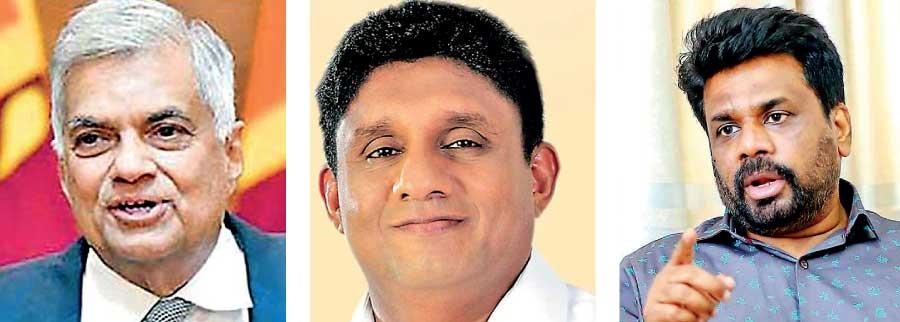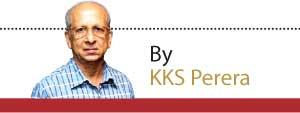04 Mar 2024 - {{hitsCtrl.values.hits}}
An Opportunity to Discard the Executive Presidency!

Section 61 of the Presidential Elections Act, No. 15 of 1981, details the process for determining the winner in a Presidential Election with more than two candidates. The last candidate is eliminated, and the second/third preferences of the eliminated candidate are counted as votes in favour of the remaining two candidates
In 2024, democratic rule faces a significant test with an estimated 4 billion people in over 60 nations heading to the polling booths to elect their leaders. The outcomes of many of these elections are expected to have a global impact, as almost half of the world’s population participate in national elections. Bangladesh kicked off the year with Sheikh Hasina securing a fourth consecutive term, followed by Pakistan. The results of these elections are likely to shape global politics for years or even decades to come.
polling booths to elect their leaders. The outcomes of many of these elections are expected to have a global impact, as almost half of the world’s population participate in national elections. Bangladesh kicked off the year with Sheikh Hasina securing a fourth consecutive term, followed by Pakistan. The results of these elections are likely to shape global politics for years or even decades to come.
In 2024, Indonesia is poised to elect a new President in one of the world’s largest single-day votes, involving a population of 276 million people. Russians will participate in Presidential elections in March, where the re-election of Vladimir Putin seems highly likely due to his control over the electoral process and state media. India, the world’s largest democracy, is scheduled for Parliamentary elections in April and May, with the Bharatiya Janata Party (BJP), led by Prime Minister Narendra Modi, leading in the polls. Mexico is set to hold its Presidential election on June 2, potentially marking a historic moment as there is a possibility that Claudia Sheinbaum, a former mayor of Mexico City, could become the first woman to govern Mexico, according to Mexican pollster, Patricio Morelos.
The European Union, representing a population of over 500 million people, is scheduled to conduct Parliamentary elections in June. Current polls indicate resurgence in support for right-wing populist parties in several member countries, including France, Germany and Italy. In Britain, elections are set to take place before the end of the year, and polling suggests that Keir Starmer, the leader of the opposition Labour Party is on track to potentially conclude a tumultuous 14 years of Conservative rule. On November 5, the United States is poised to conduct a highly anticipated Presidential election, providing Americans with the choice of either granting Democrat, Joe Biden a second term as US President or electing a Republican alternative, with Donald Trump appearing as the most likely opponent. However, the potential Republican challenger faces numerous legal hurdles leading up to the vote.
Insecurity is anticipated to play a significant role in these elections. In the West, there is a heightened sense of insecurity, encompassing both economic concerns and security issues. The ongoing war in Ukraine and uncertainties surrounding the Taiwanese election later this month contribute to the overall unease.
Executive Presidency and the 50% Fallacy
The opportunity to discard the Executive Presidency is not merely a chance for change, but a responsibility to safeguard the democratic values that form the foundation of our society. It is an “investment”, in a future where governance is characterized by “accountability”, “inclusivity”, and the
“continuous pursuit of the common good”. To neglect this momentous opportunity is to accept the perpetuation of a system that may impede progress, hinder democratic ideals, and saddle future generations with avoidable challenges.
In the upcoming Presidential Elections, or alternatively a preceding Parliamentary Election which is another possibility, a notable departure from previous patterns is evident. There is a potential scenario where no candidate may secure 50% of the total votes cast – a deviation attributed to the presence of more than two major parties competing in 2024. Various politicians across different political spectrums have voiced concerns about the potential outcome, foreseeing a situation where no candidate reaches the “required” fifty percent threshold. However, this apprehension is a half-truth. While a three-cornered contest is a distinct possibility, the notion that no candidate can be elected is a fallacy. The prevailing myth suggests that a candidate must secure 50% of the total votes plus one to be declared the winner.
A senior politician delved into the process, suggesting that if each of the three main parties fielded a candidate, none would be able to meet the minimum requirement, resulting in a stalemate and rendering the country unable to elect a President.
Examining the relevant legal framework – the Presidential Elections Act, No. 15 of 1981, and its amendment, the Presidential Elections (Amendment) Act, No. 16 of 1988 – it becomes clear that the Act does not specifically address the counting and declaration of a winner. However, Part IV of the Act, titled “The Count,” encompasses Sections 56, 57, 58, 59, and 60, which, when considered together, provide essential provisions for the counting process of Presidential elections. In essence, these sections outline the procedures and criteria for determining the victor at the election. They lay out a clear process for determining the winner when no candidate receives an absolute majority (more than 50% of valid votes). In the case of three candidates, the Commissioner of Elections follows a specific procedure:
The opportunity to discard the Executive Presidency is a chance for change. To neglect this momentous opportunity is to accept the perpetuation of the prevailing system that may saddle future generations with avoidable challenges
The Commissioner checks if any candidate has received more than 50% of valid votes. If so, that candidate is declared elected. If no candidate achieves an absolute majority, the process continues. The last candidate is eliminated, and the second/third preferences of the eliminated candidate are counted as votes in favour of the remaining two candidates. In cases with more than three candidates, the remaining two candidates proceed after eliminating the rest. The second preferences of the eliminated candidates are then counted in favour of the remaining two.
Preference Counting: If the second preference is not counted, the third preference for one of the remaining two candidates is counted as a vote in favour of the chosen candidate. The returning officer prepares a fresh statement indicating the number of second preferences and third preferences specified in favour of the remaining two candidates. This process ensures a systematic and fair determination of the winner in the event of a three-cornered contest without any candidate obtaining an absolute majority.
Section 61 of the Presidential Elections Act, No. 15 of 1981, details the process for determining the winner in a Presidential Election with more than two candidates. After eliminating candidates and counting preferences, the Commissioner receives statements indicating the number of preferences in favour of the remaining two candidates. The Commissioner then ascertains which of the remaining two candidates has received the majority of the votes so counted. The candidate who has obtained the majority of the counted votes is forthwith declared elected to the office of President. This section emphasizes determining the winner based on the “majority of the counted votes”, without specifying a “required percentage”. Therefore, a candidate can be elected as President with a percentage lower than 50%, as long as they receive the majority of the counted votes in the described preference counting process.
In a hypothetical scenario with numerous candidates who share popularity almost equally, a candidate could potentially become the Executive President of Sri Lanka with as little as 2 to 3 percent of the valid votes. There is no specified minimum cut-off point or required percentage for a candidate to secure victory in the Presidential Election. The determining factor lies in receiving the majority of the counted votes through the preference counting process outlined in Section 61 of the Presidential Elections Act, No. 15 of 1981.
25 Nov 2024 40 minute ago
25 Nov 2024 58 minute ago
25 Nov 2024 2 hours ago
25 Nov 2024 2 hours ago
25 Nov 2024 2 hours ago